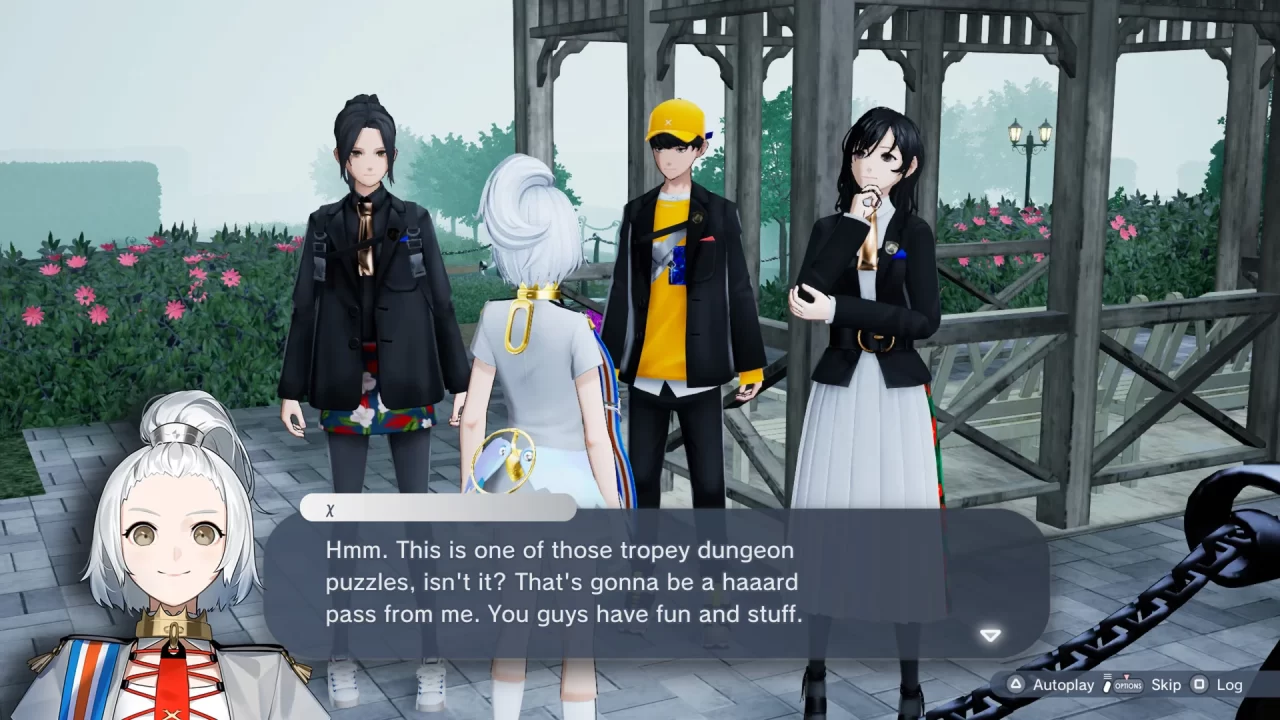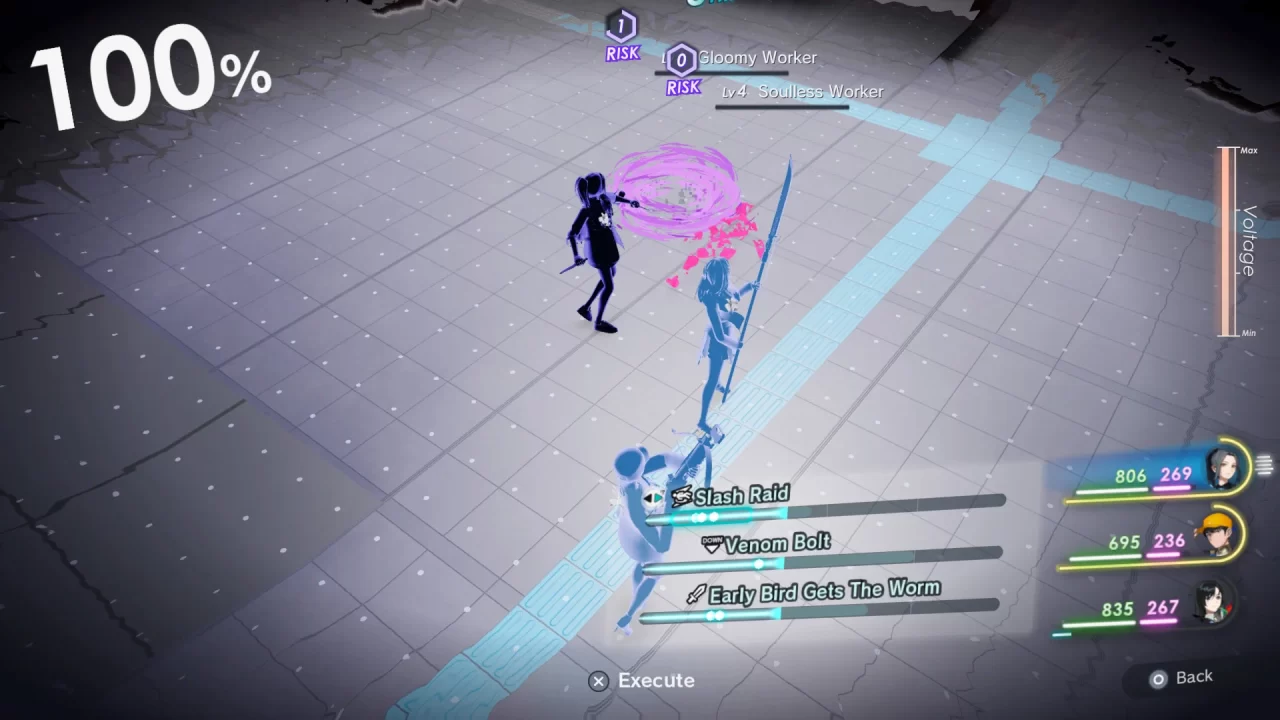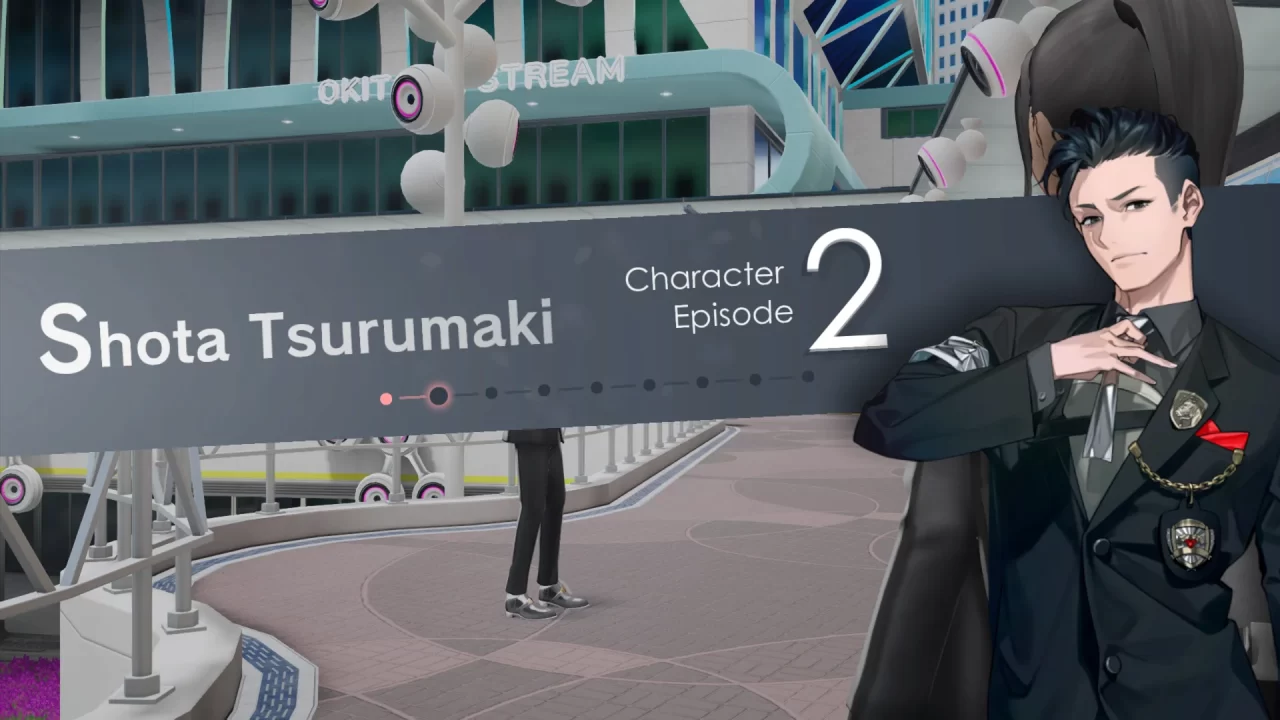The definition of catharsis is the process of releasing and thereby providing relief from strong or repressed emotions. Catharsis is also the name of a unique effect that allows the main characters of The Caligula Effect 2 to fight in the virtual world of Redo. This RPG sequel is also a somewhat cathartic experience, given the strong emotions I still feel towards its predecessor, The Caligula Effect: Overdose, which has the dubious honor of being my lowest review score yet. The Caligula Effect 2’s predecessor is underwhelming, with the writing in particular a frustrating blend of good ideas with mixed messages. It certainly left an impression, though not a positive one. Still, reading others’ thoughts on The Caligula Effect 2 made me curious enough to test the waters. I’m glad I did, as this game is a much stronger title in every respect, even if its next-gen port on the PS5 merely presents a glossier veneer.
The Caligula Effect 2 takes place a few years after the first game’s events. However, you don’t necessarily need prior knowledge of that title to enjoy the sequel, except for one rather large character reveal later. A mysterious new virtuadoll (a type of artificially created idol) named Regret is trapping a host of people inside a virtual reality world called Redo with the help of a group of supporters called the Obbligato Musicians. A rogue virtuadoll named χ infiltrates Redo, runs into you, and decides to unlock your memories of reality while giving you the means to fight inside Redo. Forming the Go-Home Club with other characters who have awakened their memories of the natural world, you hope to help χ defeat Regret and return everyone to reality.
Saying more on the story dives into spoiler territory, something to avoid since many of the narrative reveals and themes are well explored and conveyed. I love the emphasis on empathy and trying to gain a modicum of understanding toward others’ feelings and situations at the heart of the plot. The Go-Home Club and several of their adversaries in the Obbligato Musicians are characters with a lot of complexity and depth. You can’t help but feel for them the further along in the narrative you progress. Some of my favorites of the cast are the obligatory best friend Gin, student council president Marie, cheerful underclassman Niko, and the mechanical Machina. Details that surface about the characters build your ability to relate to them the more you learn. I like how the story progression also focused so much on χ’s growth. At the start of the game, she honestly couldn’t care less about any of the humans she encounters, but eventually, she learns to empathize with them in a reflection of your journey throughout the story.
The Caligula Effect 2 is a turn-based RPG emphasizing strategy and planning during fights. When you go into battle, you control your protagonist with AI support for other active party members that you can customize. When it’s your turn, you can select from a wide range of offensive moves that grow as you level up and gain more abilities. You can also opt for more support-based skills instead of item usage. The game shows you the likely outcome of your combat decision and how the enemies and other characters will act in comparison, letting you assess if that action will be successful enough to follow through or if you want to try another one. It’s an exciting mechanic I occasionally use to pick the best move for an available situation. For example, if an enemy guards, I’d opt to go back and pick a move guaranteed to bypass their defense. Every move costs a certain amount of SP, but SP also regenerates. You can automatically renew your SP pool by sacrificing a turn, another strategy alongside determining the best time to heal. Party members have different skill sets, such as tank or support, which you’ll strategize around depending on your party lineup.
Dungeon exploration is more streamlined and less frustrating in this game than in Overdose, and I like that there are attempts to differentiate the areas by having unique puzzles or events to clear first. You can also opt to revisit dungeons after clearing them, allowing you to talk to NPCs for side quest purposes and fight random encounters to level grind. Side quests abound as you track all the characters you encounter and how close you’ve become to them through the Causality Link. Becoming closer to characters opens further quests or rewards. Most side quests are one-time affairs of the fetch variety, but a few are story-chained together and offer surprisingly complex narrative buildup if you see them through to completion.
Equipment in The Caligula Effect 2 means donning particular facades or personality traits, often granting you a helpful passive skill in or outside of battle, as several quests require having a passive skill actively equipped. You also earn χ points to help strengthen the various supports χ provides during combat. I found that the most potent of these is her Singularity χ special combo attack with the protagonist. Customizing χ’s skills as you see fit also provides a strategic mark in battle.
As you advance and fight alongside the various Go-Home Members, you unlock special Character Episodes that offer further insight into who they are and what motivates them. It’s entirely possible to fail an episode and get further ones locked until you use χ points to retry it. It can be frustrating depending on how many “correct” answers you must give in a scenario, but it isn’t impossible either. I appreciate how much more depth these episodes provide in understanding a character’s reactions to certain story scenes that you aren’t privy to otherwise.
The Caligula Effect 2 has serviceable visuals, though the PS5 port in particular isn’t going to wow anyone with its graphics. There’s a large discrepancy between the blandly generic 3D graphics used in-game and the gorgeously expressive character art used for the main characters alongside text boxes and status screens. I appreciate the distinct character designs, with particular praise for the phenomenal female protagonist design. Script-wise, the localization is excellent, with not even one typographical error. I do wish the game didn’t use as much derogatory cursing regarding certain characters. Still, I understand the narrative reasoning behind why it happens, even if I don’t personally care for it.
Sound-wise, I sincerely enjoy the soundtrack. The vocal tracks are long enough that you don’t notice a ton of looping, and the different versions of said songs also help them from ever feeling “too played.” There’s also a great deal of musical variety. The voice acting is in Japanese, containing several passionate and powerful performances throughout the game. In particular, Niko, Marie, and the often explosive Kobato have some incredible voice-acting moments. You can catch music and other clips here courtesy of NIS America.
As for weaknesses, just like in its predecessor, there’s a relative lack of enemy variety in The Caligula Effect 2. I found myself fighting the same foes over and over. Also, sometimes, the game delivers several lengthy story scenes before finally letting you save your progress. If you’ve played a prior port, the PS5 port offers little incentive to replay. However, you will get the benefit of swift loading times. I’m hard-pressed to find much else to list as a weakness. The Caligula Effect 2 exceeded my expectations and is a much-improved sequel. I particularly enjoy the heartfelt exploration of its themes of empathy and understanding. I’m glad I gave this game a chance and hope others will do the same. The Caligula Effect 2 had quite a cathartic effect on me.





